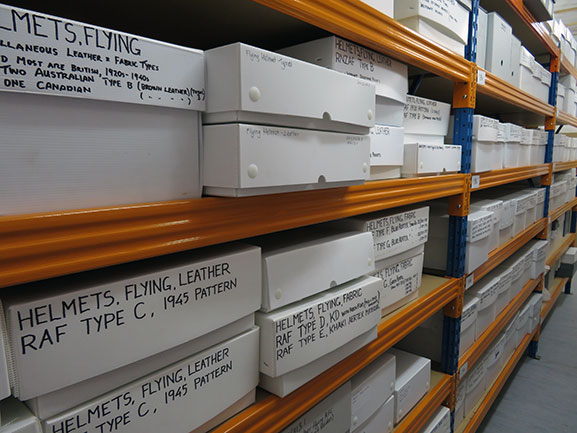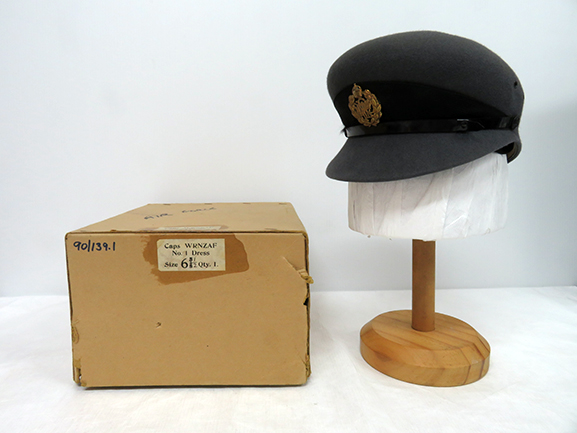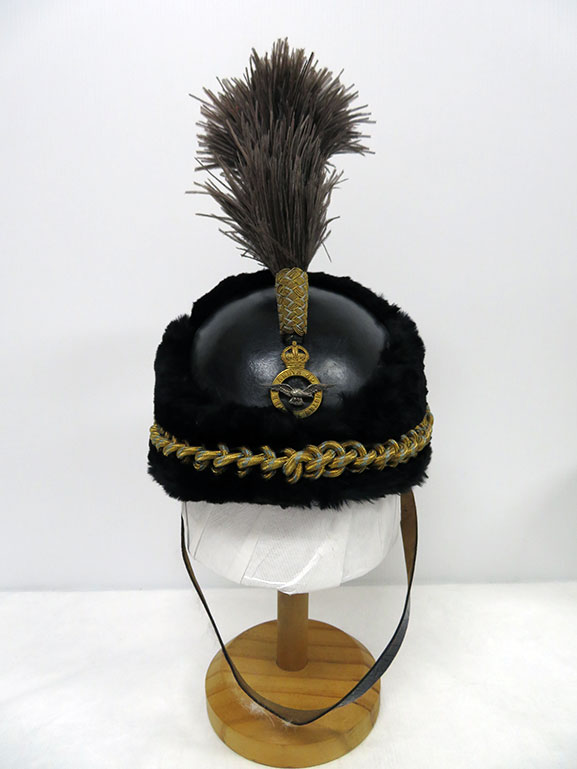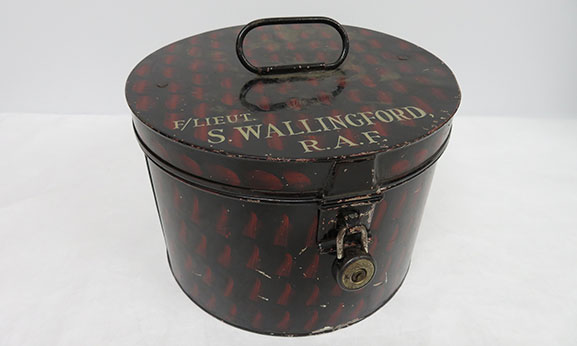Headgear, usually in the form of hats, helmets or headdresses, has long been part of military dress, fulfilling roles of protection, insulation, identification and decoration. For civilians too, the wearing of hats in public was practically ubiquitous until well into the 20th Century, and hatters and milliners did a brisk trade. As a result, headgear features prominently in the Air Force Museum textile collection and approximately two thirds of the shelving in Clothing Store D is devoted to it. We have a lot of hats!

As with the other items in the textile stores, we aim to ensure that all the headgear is appropriately packaged in conservation-grade materials that protect the item and prolong its life. In most cases this means that each item, or group, of headgear has its own box and is supported appropriately within. Our box-making materials of choice are fluted polyethylene board and acid-free card, and the object is cushioned with tissue or foam.
Being boxed up is nothing new for some of our headgear, however. Hats and headdresses are often made of soft materials that have been carefully stitched or moulded into a three-dimensional form. As such, they have required protection from damage – particularly from crushing – throughout their lives; unless you’re wearing a beret, a flat cap or an academic bonnet, no-one wants a flat hat. Extra care for headgear might be necessary when the item was expensive, or was a key piece of dress uniform. Other threats such as insects, water, dust and dirt are best kept at bay also.
Consequently, some hats were supplied with (or their owners acquired) rigid storage and travelling cases to keep them in good condition, and there are several examples in our store rooms. At its most basic, the case might be a simple cardboard box that would protect a new hat, such as for this women’s round moulded model – a WRAF type used by the WRNZAF between 1953 and 1962.

From the collection of the Air Force Museum of New Zealand.
This more substantial example belonged to Air Commodore Ronald ‘Nugget’ Cohen, and originally held his pith helmet. Constructed of metal for durability, the case is particularly suited for travelling, and the transit labels on the exterior demonstrate that it has done plenty of this. Inside, the case has shaped inserts that support the hat snugly. On the lid is the monogram of Gieves Ltd, a prestigious London tailoring firm with a long history of outfitting the armed forces.

From the collection of the Air Force Museum of New Zealand.
Of similar design is this painted hat box, which held a hat belonging to Flying Officer I. L. S. McNicol. The Museum does not have McNicol’s hat, but the shape of the box suggests that it too housed a pith helmet. The tortoiseshell effect provided by the black and red paint demonstrates that the hat box was intended to look good in its own right. The metal interior is polished.

From the collection of the Air Force Museum of New Zealand.
The same exterior paintwork is seen on the small round metal hat box for Air Commodore Sidney Wallingford’s RAF Full Dress headdress, which he wore when he was a Flight Lieutenant. The headdress was a type introduced into the RAF Full Dress uniform in 1921 and popularly, but inaccurately, referred to as a ‘busby’. Dress regulations prescribed that it be made of “black chrome leather trimmed with seal dyed nutria” and have “gold and blue plaited cord across front”. Wallingford’s headdress is crimson-lined and was supplied by Pulford and Sons, another high-quality London military tailor. The hat box lid has a dedicated canister to hold the ostrich feather plume that completes the headdress.

to Air Commodore S. Wallingford.
From the collection of the Air Force Museum of New Zealand.

From the collection of the Air Force Museum of New Zealand
Although a hat box like Wallingford’s would still perform its intended task ably, we don’t require it to do so; the box is a collection item in itself, and therefore needs appropriate protection. We are also conscious of another form of damage that the hat box wasn’t designed to prevent – deterioration over time. The box is made of metal, and any tarnishing to its unsealed interior could be transferred to the head dress. Furthermore, products used in the preparation of leather and fur can react with metal, hastening rates of deterioration. For this reason, the head dress and the case are stored separately from each other, as are our other hats that still have their original boxes.



